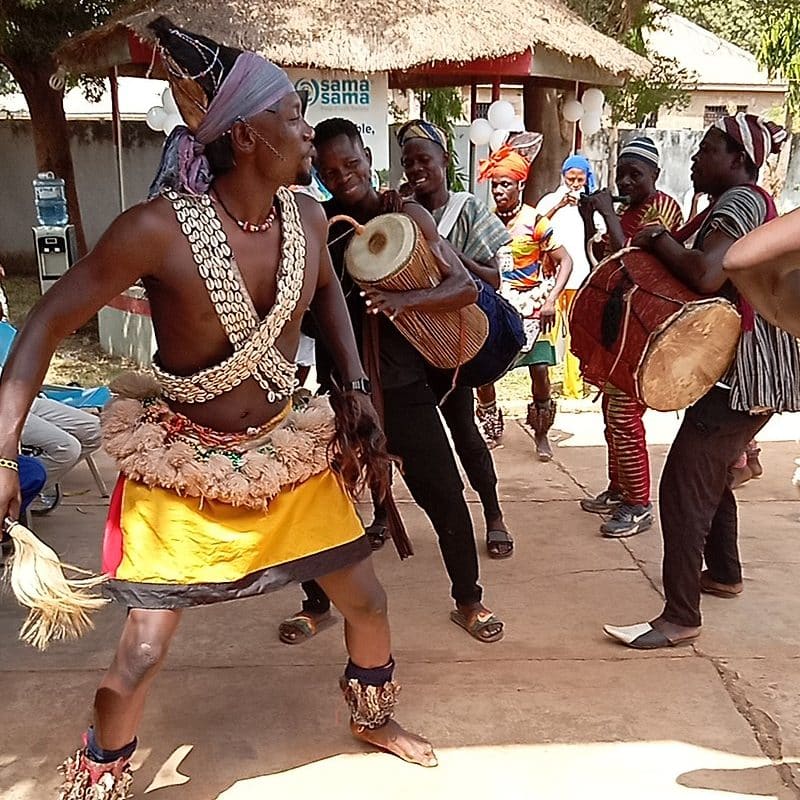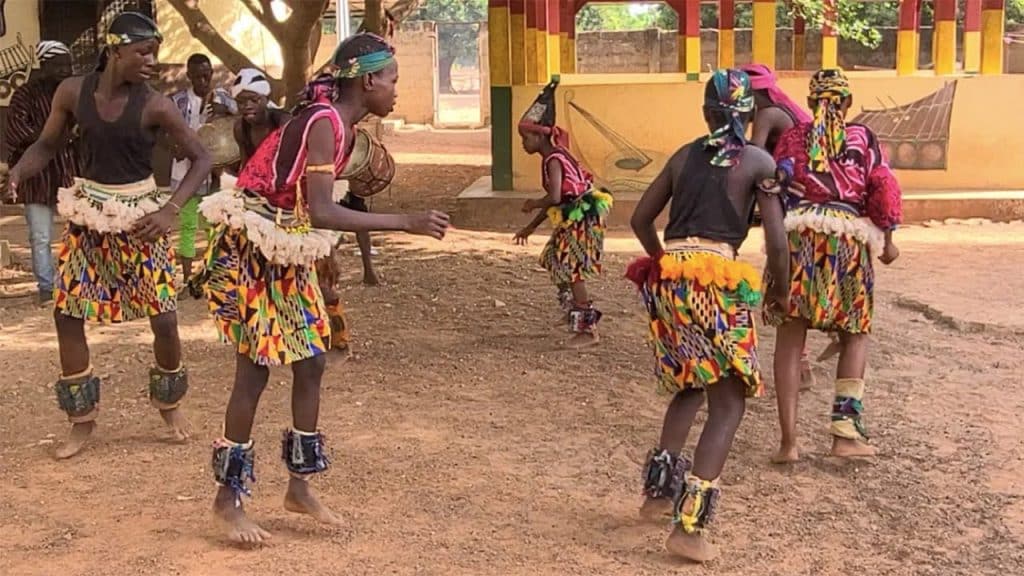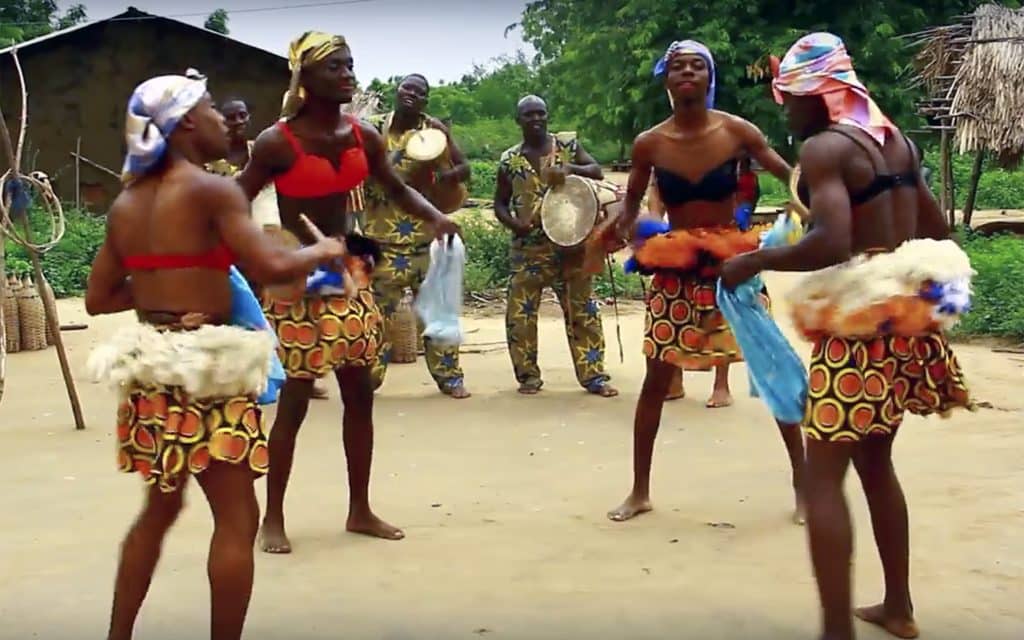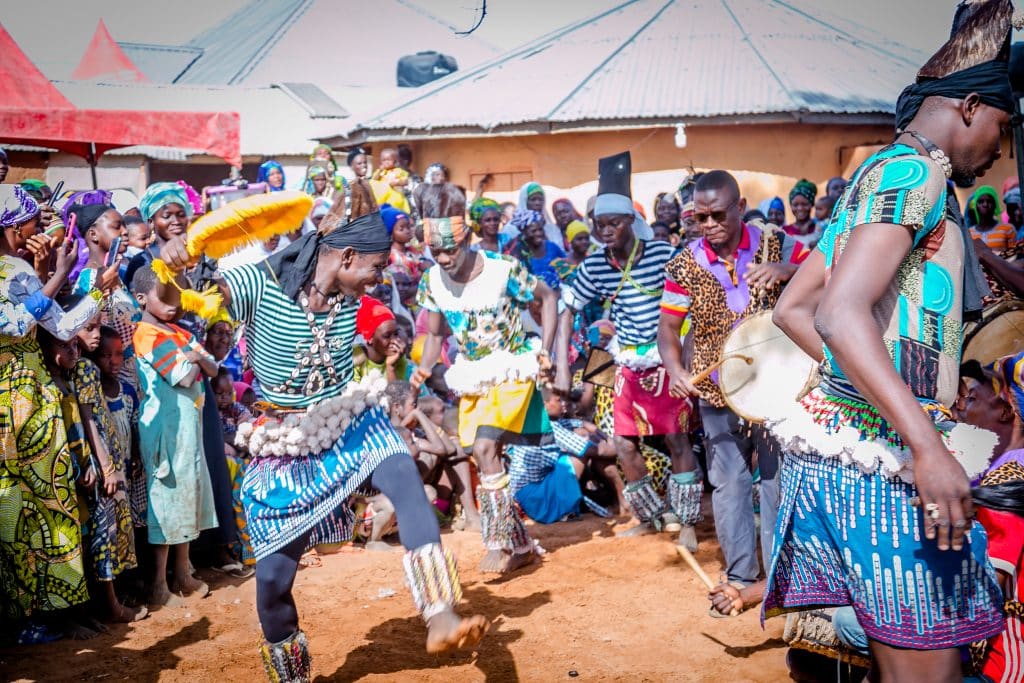Bamaya is the most widely recognized social music and dance of the Dagbon people in Northern Ghana, which means “The river (valley) is wet.” Originally, this classic dance was a religious musical performance that highlights the Dagbamba/Dagomba people’s philosophy and culture regarding women. Currently, Bamaya Dance is danced during funerals, festivals, and national day celebrations.

Bamaya has evolved from a slow processional dance-drumming to a ceremony consisting of at least nine distinct phases, including Baamaaya Sochendi, Sikolo, Kondoliya, Dakolikutooko, Abalimbee, and others. Each phase has its own unique set of dance routines, movements, and choreography. The instruments used for this dance include Gungon, which is a master drum with double-headed cylindrical drums, Lunna, which are supporting drum(s) with hourglass-shaped drums, Siyalim, container rattles, and Wia, which are notched flutes.
Bamaya Dance
Tourism in the Northern Region offers a plethora of attractions, including a rich culture of traditional dances such as “Bamaya”. This popular dance is frequently performed at public events and functions.
“Bamaya” derives from the Dagbani language, meaning “the river or valley is wet”. The dance is primarily performed by men dressed in feminine attire.

The ensemble includes a lead dancer, other dancers, and drummers who also sing along with the dancers. The dance movements are highly symbolic, involving swift footwork and waist twisting as the dancers move around the drummers.
Beads and cymbal bells adorn the dancers’ waists and chins, creating a rhythmic sound as they shake and stomp their feet during the performance.
“Bamaya” is accompanied by a chorus song supported by drums and flutes. The dance movements are dictated by the rhythm of the music, with the leader communicating the cues to the other dancers.

The tempo of the dance varies, with the dancers moving either slowly or swiftly depending on the sound of the drums and flutes. At the end of the performance, each dancer displays their own unique skills before leaving the stage.
History
According to oral history, the Bamaya dance originated from an extended period of drought that hit most parts of the Dagbon states in the Northern Region during the early 19th Century. The chief and his elders sought the help of an oracle, which instructed them to appease the gods of the land by wearing women’s apparel and sacrificing animals. The men had to dress like women to give thanks to the gods since it was believed that the prayers of women usually got a quicker response than those of men. Later, when the rains fell, and crops were harvested, creative adults adapted the children’s game into a full-fledged dance called Bamaaya.
The dance started in a village named Zheng within the chieftaincy area of Nantoŋ, during a period when the village was hit by drought and hunger, and the only foodstuff that could be grown was the tubaani (Bambara beans, similar to chickpeas). The dance movement was modified from a dance called Jera, with women using shells, beads, and cotton to make colorful belts of pom-poms that drew attention to the dancers’ shimmying midsections. As years went by, dancers apparently began wearing increasingly outlandish costumes to amuse themselves and their audiences.
The Bamaaya costume suggests male cross-dressing, which is strikingly unusual in the gender-specialized Afro-Islamic culture of the Dagomba. Some Dagombas teach that the Bamaaya costume stems from unethical conduct of men toward women, but others suggest that the Bamaaya frenetic motions derive from waving off mosquitoes by shaking hips and arms. In an arrangement taught by Alhaji, dancers come to the stage and form a circle in time to the relatively slow-paced music of Naa Daa. After moving through the more up-tempo sections, dancers go off-stage with a return to the music of Bamaaya.
In Bamaaya, Mazhe and Nyagboli dancers display their own creativity and style. They all utilize the same movement vocabulary, but everyone is “doing their own thing,” so to speak. Dakɔli Kutoko is unique: dancers bump hips against their neighbors on the circle. The instrumentation in Bamaaya is unique among these materials, as there is no part for answer lunga. Nyagboli in Bamaaya is slightly different from the way it is played in Tɔra and Takai.
Credit: Ghana Goods






































